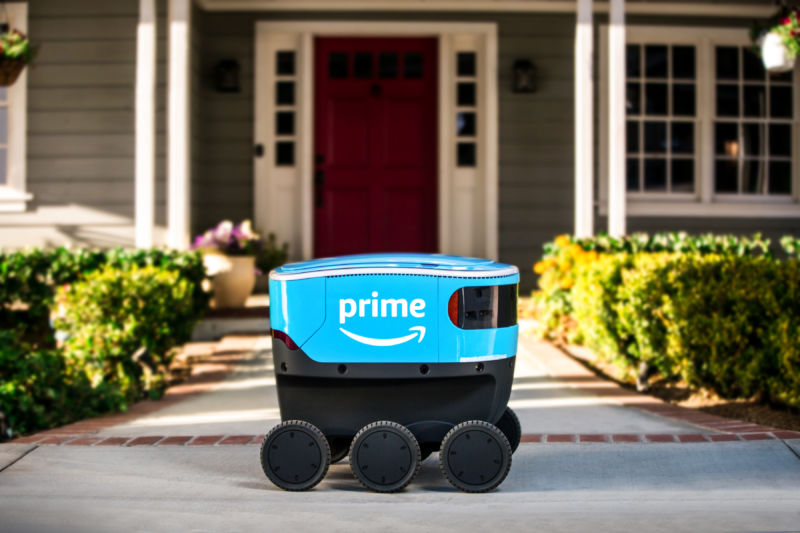AMAZON
 Company begins testing deliveries with sidewalk drones
Company begins testing deliveries with sidewalk drones
Amazon said on Wednesday that it will start delivering packages using a six-wheeled sidewalk robot called Amazon Scout.
"Starting today, these devices will begin delivering packages to customers in a neighborhood in Snohomish County, Washington," the company's announcement says-that's just north of Seattle. Amazon says that its robots "are the size of a small cooler and roll along sidewalks at a walking pace."
Amazon is far from the first company to experiment with sidewalk robots. Startups like Starship and Marble have been testing the concept for a few years now. But as the Internet's largest retailer, Amazon has the potential to quickly make sidewalk delivery robots a mainstream phenomenon.
"We're starting with six Amazon Scout devices, delivering packages Monday through Friday, during daylight hours," Amazon says. "The devices will autonomously follow their delivery route but will initially be accompanied by an Amazon employee."
A 2016 Amazon patent filing describes a model where small sidewalk robots carry packages from a full-size delivery truck to customer addresses. Starship has experimented with a similar approach, using full-size carriers as a "mothership" to carry a fleet of up to eight sidewalk drones to a neighborhood, along with a truckload of packages. A human worker then transfers packages from the truck to the sidewalk drones, which go on to drop off the packages at individual customers' addresses.
Of course, getting this model to work will require rethinking the way package delivery is organized. Right now, Amazon hires people to drop packages off customers' front porches, where they sit unattended until the customer gets home and collects them. But Amazon's sidewalk drones do not seem to be designed to drop packages off. Instead, a video accompanying the announcement shows an Amazon robot pulling up in front of a customer's house, and the customer coming out to meet the drone.
It seems like a more complicated model, but it would cut down on the package and could turn out to be more efficient if it enables delivery to deliver more packages per day. It could also be coupled with a shift in shopping behavior. Instead of ordering a product and expecting it to show up on their porch a couple of days later, customers might get used to placing an order at work in the morning and expecting to collect it from a sidewalk robot that evening.
To be clear, I'm just speculating here. Amazon's announcement does not provide many details about how its robot sidewalk will be loaded or how the company will make certain customers are available to pick up packages when a robot arrives. The announcement states that customers will "order just as they normally would and their Amazon packages will either be delivered by one of our trusted carrier carriers or by Amazon Scout." Amazon says that customers will "enjoy the same delivery options including fast, FREE Same-Day, One-Day and Two-Day shipping" -but does not detail how these options will work with delivery robots.
Amazon's focus on sidewalk robots makes it different from startups like Nuro and Udelv that are building street-legal robots designed to travel faster and longer distances. Nuro's robots move up to 25 miles per hour, and it has a deal with Kroger to deliver groceries from a Kroger-owned grocery store in the Phoenix area. Udelv has a similar deal with Walmart. The greater range and speed of these robots means they will not need to work with a larger delivery truck.
No comments:
Post a Comment